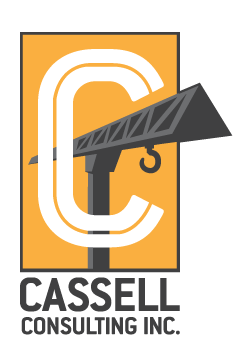Despite last year’s residential meltdown (-35%), industrial construction recorded strong growth in 2008, and commercial largely held its own, with gains in niches such as the hospitality and office sectors. Next year’s construction forecasts, released in December haven’t been good; industry experts predict a downturn in every single sector of construction for 2009. The good news is that fuel, lumber, drywall, and steel prices have fallen to their lowest prices in years. However the current AIA Billings index is down to its lowest level since its origin fifteen years ago, and we know that if architects aren’t drawing, we surely won’t be building much in the near future. Major projects in Las Vegas are being mothballed, shutting down mid-stream. (Now that’s an expensive bearish bet on the economy.) The bid markets have slowed, but likely not as much as we’ll see in the months to come. Likewise contractors’ margins are plummeting. We’ve been told by our friends in estimating departments that even uncomfortably low bids are finishing second or third. It appears that the bottom-feeding frenzy is on.
On the Mainland, in order to help our customers survive the downturn, we are now working jointly with Market Accelerators and Golden & Company CPAs in Vancouver, Washington. Our goal is to provide quality Marketing, Operations, and Back Office (“M.O.B.”) expertise. Our first MOB lunch seminar is planned for early 2009. We’ll be rolling out combined service offerings, to analyze and strengthen all three critical aspects of your company’s strategy and operations. I’m certain of 3 things that Contractors need to do to survive in this economy:
1) market effectively to the right target, 2) bid based on our true internal costs, and 3) check those costs with consistent, accurate job cost tracking… If that is, we want to keep our best people employed, or even survive to build another year.
In the Islands, the big news for Timberline customers in Hawaii is the sale of Ledgerwood Associates Hawaii to Oregon-based Skyline Business Systems. Working with Skyline will be a new, great opportunity for us in the Islands, as well as in Alaska, and the Pacific Northwest. Pat Ledgerwood and I will be continuing in our current roles for Skyline, and we’ll all be working together to help make the transition a smooth one for our customers. The main difference you’ll notice is the letterhead on our correspondence, and the additional depth Skyline’s John Keaton and Jeff Williamson bring to Hawaii’s Timberline clientele. Pat will introduce Skyline to Hawaii’s Timberline User Group on December 11th.
Early December finds me on Oahu as well, teaching SureTrak at Honolulu Community College, and finishing up Beachside Roofing Hawaii’s estimating implementation and database. This month we’re working on setting up and assigning Material Classes, WBS Codes, and assigning the new cost codes to the Beachside’s new roofing database, as well as creating graphic Assembly help, and setting up Buyout.
Back in Washington in mid-December, we’ll be working in the office with our Support Assurance Plan (SAP) clientele in Iowa, Washington, and Arizona, to renew agreements for the coming year. (SAP clients are realizing a roughly 30% discount in our consulting and support services, when compared to hourly billing.) I’ll wrap up the year with a family vacation, December 20th – January 4th. Hopefully the snow will hit the Cascades soon, and we’ll be making some powder runs on Mt. Hood or Mt. Bachelor.
All the best Holiday Greetings to all our valued customers and friends!
November is upon us, Election Day is past, and the country voted overwhelmingly for a change in the balance of power. President-Elect Obama has promised us roads, bridges, and schools, and Honolulu voters backed Mayor Hanneman’s Light Rail initiative on Oahu. All signs that construction activity has support top to bottom in very diverse areas of the country. With a little luck, the good intentions will turn into concrete and steel, and more than hot air. We can all use the work, especially with residential looking grim for at least another year. I just got back from 2 weeks on Oahu, where Hawaii’s voters were excited to have a Local headed for Pennsylvania Avenue. Prior to that trip I was back in Nebraska,and the week before down in Orange County. I am looking forward to the Holidays, and a bit of a breather.
Sage Timberline released its new Vista-compliant version 9.5. More changes were made to Accounting than Estimating, which is both the good news and the bad. The primary changes in Accounting include a more robust Security Administration, and to default data file locations. Sage Timberline insiders tell me that changes in subsequent releases will be more frequent this year, but will NOT require data file upgrades- which sounds to me like a win-win scenario. Most of our Sage Timberline accounting clientele don’t upgrade until after year-end anyway. For early adopters of version 9.5, the primary reward to Operations is the introduction of Daily Field Reports to Project Management- a very welcome addition. I will include a link to the version 9.5 Release Notes on the Support Page of CassellConsulting.com
Please note the change of my email address- I finally got our domain email out of Spam Purgatory. I can be once again be reached at [email protected].
The jobs in progress are going well:
At Beachside Roofing Hawaii we designed a brand new set of cost codes, assigned to all the items in the Timberline Estimating database. The new estimating database and cost codes are fully tested and operational, and interfacing correctly into Beachside’s Master Builder Accounting system. It’s our first Master Builder project, and the Sage Timberline Estimating-to-Sage Master Builder Accounting procedure works smoothly. We finished two days of training at the end of more than a week of database development. We have two dozen assemblies for single-ply flat roofing systems, tile and shingle steep slope roofs, as well as fluid-applied waterproofing, in place and tested. Both the new cost codes and the entire estimating database are indexed to the new 2004 MasterFormat system. I also built an Estimating Model, to combine the multiple systems on a project into a single, easy to follow Takeoff Sequence. I’m anticipating doing more with Timberline Estimating Models in the coming year. Scott’s goal was to be up and running by year-end, and we’re already starting to produce estimates in Timberline, almost 2 months ahead of schedule. Next initiative is Buyout Purchasing implementation. We’re starting that in early December, along with building more assemblies, project by project.
We did two days of training at Seedorff Masonry’s Omaha office. Day One was mostly focused on basics, with 6 estimators relatively new to Timberline. But the excellent skill level of these “beginners” had us well into intermediate and advanced Timberline Estimating training topics by 10am! Day Two was Advanced Timberline Estimating “Tips & Tricks” session attended by 16 estimators, many of whom have used the system for over 10 years. Among our topics, we worked with WBS codes, Layouts, using Eos Explorer Extended, and spreading markups and project general requirements back into the bid items in an estimate. In class we devised a slight variation on my tried and true Adjust Column techniques, which I’ll write up and post to the Support section of the webiste, and include a link here as well.
GE Johnson’s project in Colorado is closed out. Concrete Assembly replacement Phases I, II, & III all complete. Thanks to Doug Finely for excellent communication of project goals, and Bob Baker for strong IT backbone to make it possible. We still haven’t met personally, did all the work on a virtual computer (that doesn’t really exist), yet the project is complete. Welcome to the 21st Century – I love my job! We finished 3 days of training in Orange County for PBC Companies, commercial concrete and masonry contractors. There’s more to do, but after the training, I think Jose and Mark will be able to finish and get the databases merged, and new cost codes we designed, up and running on their own.
We’ve got some new initiatives in the planning stages for the New Year. Here in Southwest Washington, I’m working with Golden & Co. CPA’s and Market Accelerators, to offer a series of M.O.B. (Markeing-Operations-Back Office) seminars for local contractors. Our plan is to sponsor lunch meetings starting in January. Call or email John Caughell, Michael Thompson, or myself for more details. We’re offering our specialized Project Management / Scheduling training, SureTrak for Contractors in Honolulu next month. We’ve been offering training to government contractors for over ten years. We’ve noticed that the government specs for Network Analysis Schedules have become far more stringent, putting contractors at a disadvantage, if they’re not trained specifically to meet the high standards of the construction contract. (Read you won’t get paid unless your schedule is updated and linked correctly to the Schedule of Values, and activities Resource and Cost-Loaded. period.)
October is starting off at a near frenetic pace. This week we’re finishing up a nearly year-long Timberline Estimating database project for GE Johnson General Contractors, of Colorado Springs, Colorado. The job included a complete rebuild of GEJ’s 40+ Timberline concrete estimating assemblies, (the bread and butter of most self-performing GC’s). GEJ broke the job down into three phases, foundation, horizontal, & vertical components. Today’s technology tools allow efficiency and flexibility unheard of just a few years ago. Case in point- I’ve never met Doug or Bob, with whom I’ve been working for the past year, and the job is nearly done! We log on GEJ’s remote server, and do all the work online. The project team reviews the work, and updates the project log with notes, suggestions, and questions, keeping communication timely. The phases were planned and executed in the sequence laid out at the beginning of the project, and we’re down to a finishing up the final tuneup of our last four assemblies. We tackled the full gamut of commercial concrete work, starting with caissons and pile caps, and finishing with structural cast-in-place stairs and topping slabs. Most of the assemblies existed in a prior version within GEJ’s database. We enhanced formwork methodology, streamlined the variables, and brought consistent workflow across all the assemblies, while incorporating GEJ’s innovative wbs usage. End result- accurate takeoff, faster, with greater consistency.
I’ll be down in Orange County the second week of October, working with PBC Companies, in Brea, California. We’ve got an ambitious goal to go live with a brand new estimating system by the first of 2009. Two of PBC’s senior estimators are working on building out two separate databases for their concrete and masonry work. We’ll be working to synchronize the database components, and merge the two into a single master database before the end of the year. The upcoming training session will focus on efficient database management, using database editor for faster database manipulation, and setting up and assigning crews and wbs codes. Full integration to Sage Timberline accounting’s cost codes is scheduled for December.
We have training planned the third week of October in the Midwest, with Seedorff Masonry, the region’s premier masonry contractor. Our 2-day training in Omaha is split into a fundamentals session targeted to its new estimators, and an advanced-intermediate session for seasoned staffers. Our long-term goals include a brand new estimating database, with all new assemblies and cost codes. SMI is one of three companies utilizing our SAP plan, which enables steady monthly progress toward our goals.
The last week of the month I’ll be on Oahu working on another interesting Sage Timberline Estimating database build, with Beachside Roofing Hawaii. Scott got my attention with his simply stated goal. “We just want to build the best roofing estimating system in the world.” (No pressure) We’re in month 2, still gathering data from the manufacturers, building prototype assemblies, and working on a new ground-up cost-coding system using the new MasterFormat 2004 coding scheme. I’ll be over in Honolulu the last week of October to start putting it all together with the goal of going live in December. We’ve already got the pilot database linked to Beachside’s Sage Master Builder accounting system. We’re coordinating the links to Master Builder with Kathy Gotzenberg of Construction Business Services, Kauai.
At the beginning of November, I plan to hop over to Kauai on another project in progress, with Unlimited Construction. Todd built the database from scratch following our training in 2006. As he’s been out managing the Botanical Gardens and Kauai Judiciary projects, current focus is on training the balance of UCSI’s estimating staff on Timberline Estimating. All successful Timberline estimates flow directly into the budget, for accurate tracking in Timberline Accounting. We’re planning to continue our training as well as assembly development in Division 3. Pat Ledgerwood of Ledgerwood Associates Hawaii & I have worked together since 1988. Pat has been the Sage Timberline Business Partner for over 20 years in Hawaii, and his name has become synonymous with Timberline in Hawaii.
Our Primavera SureTrak training is picking up in the Islands as well, with classes in December offered at Honolulu Community College, (listed under “Sizzling Seminars”, and “Project Management”). Class dates are December 4th and 5th. In addition, we’ve been working with M&M Tanks and Electricians Hawaii, providing customized onsite training for each company’s unique requirements. We’re working with both companies teaching Project Group scheduling in SureTrak. EHI is primarily interested in meeting the US Navy’s strict shceduling specification, while M&M is focused on balancing its company’s resources across all its jobs for the coming months. SureTrak does a great job of both.




